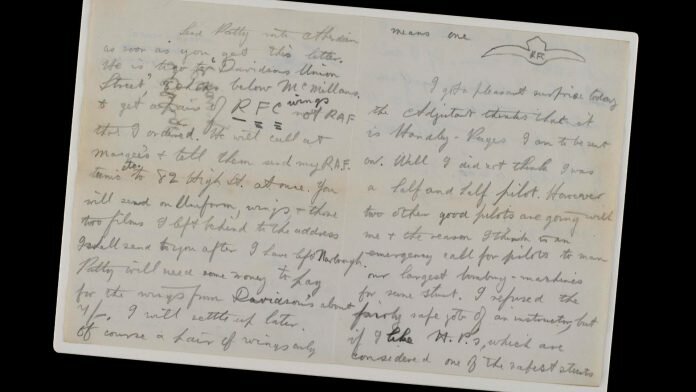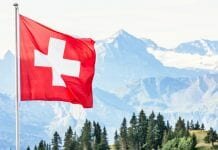
Government Europa speaks to the deputy director of Europeana, Harry Verwayen, about how digitising our cultural heritage, institutions and resources will unlock a yield of benefits for European citizens.
As we enter further into the immersive digital age where online accessibility is key, but also as we experience the European Year of Cultural Heritage for 2018, it is vital that culture amongst other resources become virtually accessible to anyone, anywhere. Across Europe, museums, galleries, libraries and archives are engaging in digitisation procedures, enabling open accessibility globally.
Europeana joins organisations with end-users — people and sectors — to help them achieve their aims, whether this be research, the sharing of content, or the creation of new materials. Working with partners, Europeana aims to develop frameworks, standards, stratagem, and policy, in relation to digital cultural heritage, as well as promoting investment in this important work.
Government Europa spoke to Deputy Director of Europeana, Harry Verwayen, about the process of European digitisation for our cultural institutions.
Why is it so important for archived analog collections to transition towards digitisation?
The answer is twofold; in my opinion, the first reason is that it is the best way to preserve archives, especially in audio-visual archives. As you can imagine, audio and video tapes become obsolete very quickly, therefore conversion from analog to digital is the most effective approach. Meanwhile, paper from the 1950s is suffering from ink rot, therefore this content will disappear if we don’t initiate this process.
For us, the most important part is that it allows material to be liberated from the physical restraints of its institution and put that to use in many different ways. When we consider researchers — if digitisation takes place, researchers won’t have to go to Amsterdam or Geneva to do that vital research. As a result, there is a financial saving in terms of travelling expenses, amongst others, which would also be incurred. Furthering this, it allows collections to be disseminated on a much wider scale than can be done with analog materials, therefore it becomes more accessible to education and creative industries.
How can digital archiving facilitate cultural exchange across Europe and further afield?
If you make resources available at a digital level — what we call interoperable — it can travel across distances and borders, and that is where exchange happens. From this, these resources can form a variety of different resources. Another important aspect is that libraries and archives — which have a traditional business model of providing information that you cannot find anywhere else — are rapidly changing and now that information can be found almost everywhere. We are transitioning towards convened conversations and sometimes this is very literally bringing people together to talk, discuss and do all kinds of things.
A good example of a project which we developed ourselves is ‘Europeana 1914-1918’. We believe that this is one of the most interesting projects that we have done to date; we have invited 10,000 people over the past five years to share their family history stories of the First World War. Therefore, as you can imagine, we invited these people to attend events in museums and libraries over the course of this five-year period, and as a result extended the invitation to share these stories.
Following collection, we made records of this data, as well as digitising the objects related to these stories — often postcards, letters from grandfathers, pens, bibles, and a piece of shrapnel. These were very emotional stories, and these have formed the largest pan-European collection of family history stories on the First World War.
Of course, if you mine that database you can identify similarities across cultures. Therefore, it didn’t matter what side of the trenches you were on, you were pretty much experiencing the same horrors during the war. These stories also raised cultural differences and these are evident by looking at what the French wrote to their wives in comparison to what the Germans did, for example. As a result, there is interesting research being done on this.
Contrary to many initial assumptions, the French talked about their weapons whilst the Germans wrote more passionately to their wives. It’s these types of things which can be identified when you begin data mining and when you provide a place for these stories to be shared and convened in one place. On the back of this, we launched a similar campaign focusing on migration in Europe, Europeana Migration. For our first event, between the 15-17 March, we invited people to share stories about migration which perhaps happened to their families or is happening currently.
How much effect does the cost of digitisation have on widespread implementation across Europe?
The costs are being dealt with in a currency which we are very familiar with — the euro — and it is not cheap. However, 15% of cultural heritage resources that we hold in our museums, galleries and archives have been digitised. Although, it has taken us 20 years to get to this point. There are around 300 million items — an immense wealth of material — but the financial cost of that has cost hundreds of millions of euros. As previously mentioned with the example of researchers, it’s very clear through cost-benefit analysis in those types of situations that digitisation is beneficial. Culture contributes significantly to tourism, which in itself is responsible for around 7% of GDP in Europe already.
But there are all kind of other areas which I think are much more important and which we are still untangling in terms of impact. For instance, it makes a huge contribution to digital literacy. However, to create this kind of impact we need to do more than just put things on the scanner and making sure the material is available for reuse. There are at least two components; firstly, it has to be a certain size; secondly, is copyright restrictions. To return to the 15% of analog-to-digital resources — that €300m — we know that only a small percentage of that is available for anyone to use freely.
What Europeana is fighting for is to increase the percentage of freely accessible and adaptable materials, because we think that only then can you experience the benefits. From this, we can make resources available to schools so that they can work with resources in a much more beneficial way. The cost-benefit relationship isn’t necessarily an answer of yes or no but about how we can make materials widely available.
Do you think that the establishment of digital archives could be financed using an EU-funded approach to incentivise uptake?
I do think that there is a role for the EU as a public body to stimulate what the market fails to do itself. Furthering this, the materials may be there, however if nobody knows about it or the infrastructure isn’t there to tap into it, then nobody can make use of it. That is a market failure that the EU should definitely contribute to in a manner which is more intensive than they are currently doing. But, I do also think that there is a role and responsibility going on between public bodies and the market. I don’t think that public bodies should be the ones to create all the technology and applications to facilitate this. We need to facilitate the market, social enterprises and commercial enterprises to work on this.
It is really the responsibility of all of us within digital archiving to contribute to the larger aims of the EU, particularly on the social side, which the European Year of Cultural Heritage 2018 can help with. If we don’t value culture and cultural heritage anymore but focus only on the financial return we could make on these significant investments, the process becomes detrimental. This work is opening our eyes on both the framework and social aspects of this — cohesion, identity. Those aspects are crucial. I think that currently there is more appetite for that kind of thinking in Europe.
Harry Verwayen
Deputy Director
Europeana
https://www.europeana.eu/portal/en


















